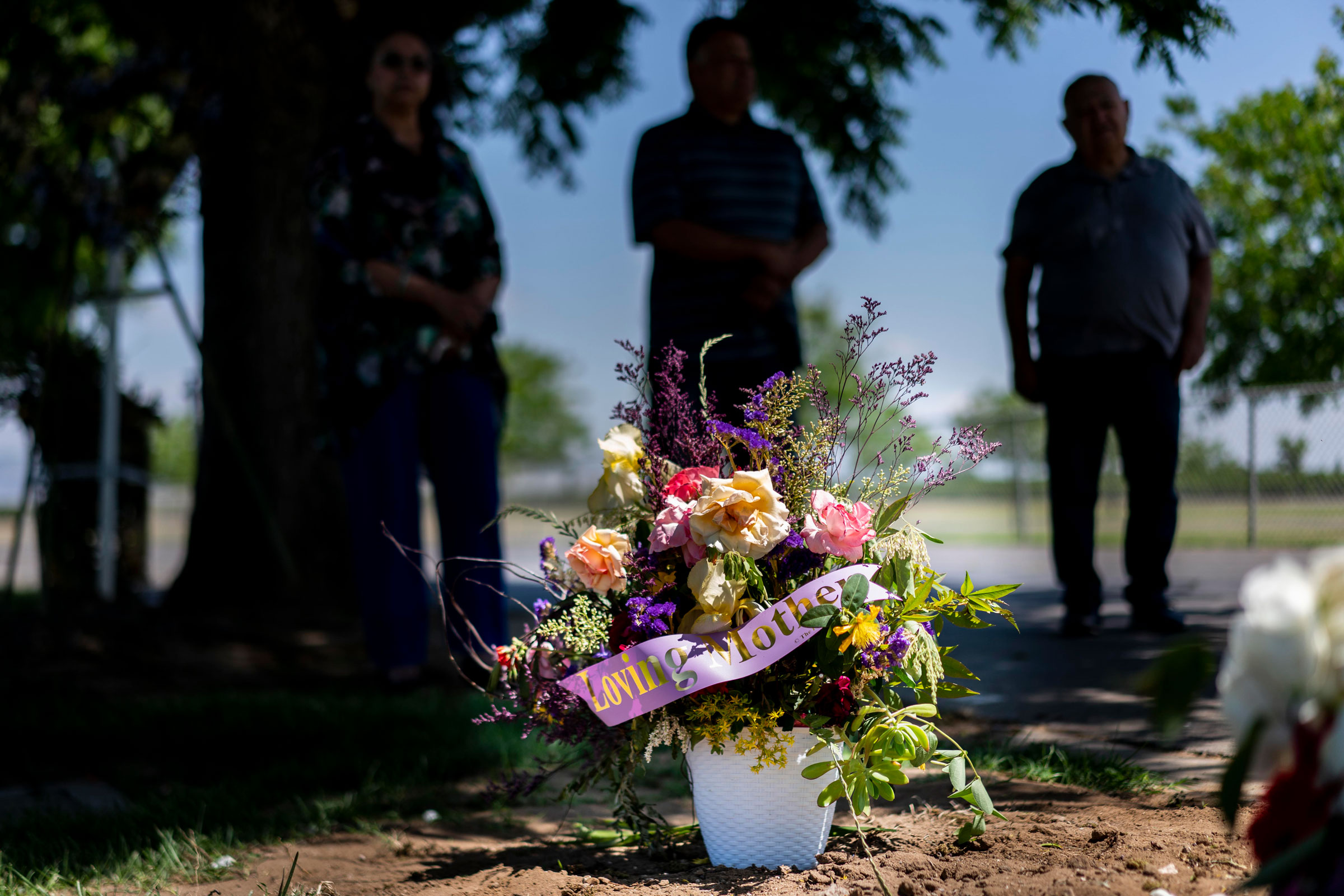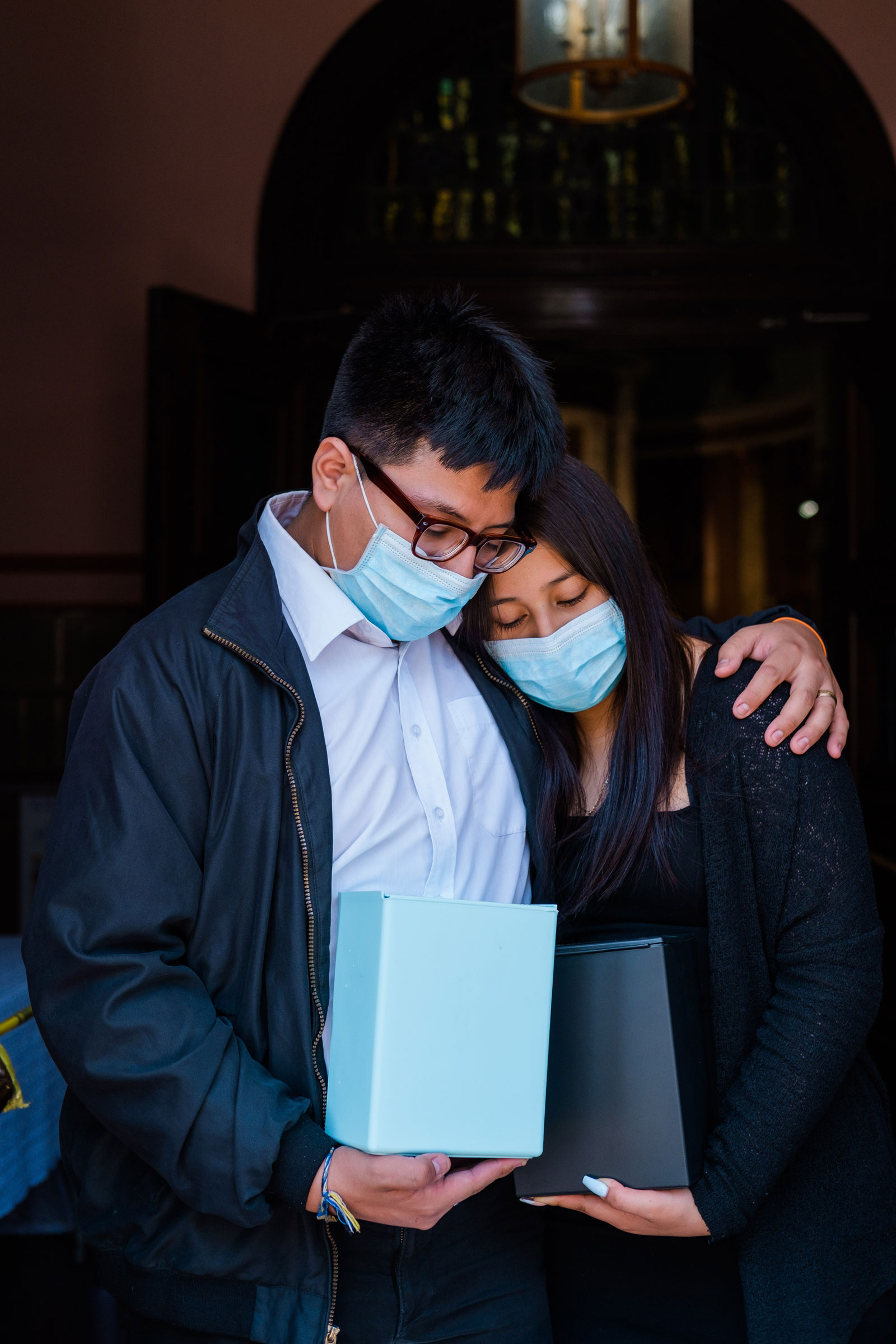
COVID-19 will impress a signature of grief into the next generation. According to the Imperial College London, 258,800 children in the United States have lost a primary or secondary caregiver to COVID-19. That is, the disease took one or both of their parents or grandparents who lived with them. A majority of these children are Black, Latinx, and Native American. Partly that’s because people of color tend to die from COVID-19 at younger ages.
Worldwide, slightly more children have now been orphaned by COVID-19 than people who have died from COVID-19. It’s a mass orphaning comparable to that produced by the AIDS crisis at its height. And also consider the children who lost their dear ones to other causes during lockdowns, and who weren’t able to call on the normal rituals of grief or places of social support.
More from TIME
Though grief is a near-universal human experience, childhood bereavement is classified as an adverse childhood experience, which raises lifelong risks to health. Tallying the impact of the pandemic on children’s psyches must include this kind of loss.
Read More: I Thought I’d Get to See My Mother Again. Then the Pandemic Hit
To try to absorb this devastating reality, I started reaching out to the people who run children’s bereavement centers around the country. I was not expecting to find a deep well of optimism when talking to people who deal with death every day. But that’s exactly what happened.
“For those of us who are in the bereavement field, there is some hope, in that bereavement has come out of the shadows in many ways,” said Micki Burns, the chief clinical officer of Judi’s House in Denver, Colo. “Before, to talk about grief and loss and death, people would sometimes blow it off, you know, and say, ‘Didn’t that happen like a year ago? Aren’t you over that already?’ With the mass amount of death that we’ve seen, it has really created this place of empathy and understanding for families who were grieving before, and even more so for families who have had a loss in the last year or so.”
More from TIME
Javi and Crystal Alfaro and their children, Giselle and Cristian, live in San Antonio, Texas, in a tight-knit, churchgoing Mexican-American community. In the years before the pandemic, Crystal’s parents lived with them, and the children shared a bedroom with their papi. His snoring made them laugh. Papi woke his grandson, who was 11 in early 2020, early on Saturdays for bike rides and attended his talent shows, as well as every one of 14-year-old Giselle’s track meets and volleyball games.
Read More: How a Pandemic Puppy Saved My Grieving Family
On the Tuesday before Father’s Day, in June 2020, Papi started feeling sick. It took the family a few days to find a place where he could get tested. Then he went into the hospital, and the family had trouble getting updates from the nurses.
On July 14, his birthday, they managed to FaceTime him, but he was on a ventilator and unresponsive. Five days later, he was gone. He was just 57 years old.
The family had to call all over town to find a funeral home that would do an in-person service. And when they found one, the place was so busy they had to wait three more weeks. After the rosary service, some family friends came back to the house for dinner. “It’s an older couple, my in-laws’ age,” said Javi. “And he was talking to us about when he lost his dad and he went through bereavement counseling. And he said it’s nothing to be ashamed of–it’s something that helped me.”
Javi said their friends helped them overcome some cultural conditioning that might have otherwise stopped them from seeking professional help. “Being Hispanic, I think there’s that strong, ‘I don’t need to go to the doctor. I don’t need to talk to somebody–and I’ve just got to realize that it’s OK.’” Their family friend told them about the Children’s Bereavement Center of South Texas.
Read More: Grief Is Universal. That Doesn’t Make It Less Isolating

Only a few dozen centers around the country specialize in grief counseling for children and their families. These are often free and funded by donations. Founded in 1997, the Children’s Bereavement Center of South Texas is one of the largest and oldest. It’s a catchment basin for the rivers of trauma, individual and collective, that well up in this part of the country, often serving migrant children who’ve recently crossed the border at their Rio Grande location. They opened a third location in 2017 after a mass shooting in a church in Sutherland Springs, Texas, and recently opened a center in Uvalde as well. “If you were able to be here and see our center, it’s like a big warm home,” Tami Logsdon, their program director, told me. “In ordinary times you would smell dinner cooking with volunteers. We have pet therapy dogs.” Of course for most of 2020 they had to use Zoom.
The center provides both group and individual therapy for children as young as 3, as well as for their caregivers. During the pandemic, they started COVID-specific online support circles.
At the beginning the Alfaros were most concerned about Cristian, their artistic, sensitive younger son. “He was crying, he was sad. He was really hurting and voicing that he was hurting,” said his mom.
“I’m really open about everything, so as soon as my mom told me about the treatment center that we could get help, I was really excited about it,” Cristian said. “I think without it, I wouldn’t be where I’m at right now and I wouldn’t be as happy as I am.”
He learned that “crying can let out your emotions because if you bottle them up, then it could maybe cause some mental issues. Crying is OK. It’s not bad.”
Read More: Death Doulas Used to Be Rare. The COVID-19 Pandemic Changed That
Over time, her parents came to realize that Giselle, who was more reluctant, was the one who really needed to open up. Giselle said she learned that all her emotions were OK, that she wasn’t alone and she wasn’t “weird” for feeling a certain way. And the circles made it safe for her to talk about what the therapist called “her person” and hold on to the good memories.
It was important to the whole family to have other people to talk to who had experienced the losses of COVID-19 directly, because they felt surrounded by people who didn’t take the disease as seriously as they did and didn’t follow the guidance or wear masks.
Gradually they started to feel better. After a rough start to the remote school year in the fall of 2020, Giselle and Cristian found their teachers to be supportive and understanding, and they were able to pull their grades up. Cristian even got involved as a drama club member, creating remote newscasts with other students.
Bereavement counselors told me that they have experienced a surge of interest during the pandemic, accompanied by waves of support and donations. They see the potential for the post-COVID world to soften into a more tender place.
Burns, in Colorado, said Judi’s House created a bereavement education program for schools. “We talk about, what is grief, and what is it like to experience grief, what is our reaction, and how can you be a support to a friend who is grieving? How do you know when your friend might need more help than what you can provide and you need to reach out to an adult?”
That way when a second grader, say, loses a parent, they aren’t coming back to school with classmates who ignore what happened or avert their eyes. This training also gives teachers the tools they need to support grieving students, which most say they aren’t prepared to do. “To be like, OK, I can open up these conversations in my classroom and we can support kids who are grieving in the classroom–it doesn’t have to be all on the counselor,” Burns said. “It can be something that we do together as a community. We see it as a universal prevention program.”

Joseph Kelly, the director of programs at Peter’s Place in Delaware County, Penn., told me something simple that stuck with me: We can’t presume to define the experience of any young person. It is up to them to say what a loss means to them, or say how they feel about anything, for that matter. And how they feel in the moment likely will change over time and in unpredictable ways.
Kelly told me about an approach he takes to grief counseling from author and educator Alan Wolfelt known as “companioning.” “We are not the experts on your grief. You are. And we seek to understand that through inquiry and through listening. The goal of companioning isn’t about finding your way out. It’s about honoring the journey as you walk it.”
This is as true for bereavement as it is for mental-health struggles, and for any other obstacle that young people faced during the pandemic. We adults may regret what children were put through. We may be angry about how leaders or institutions failed them. We may feel guilty or overwhelmed by sadness. But we owe them the respect of allowing them to claim the meaning of their own experience. Even if it hurts us to see them hurting, we can’t rush them out of the process of coming to terms with it, let alone moving beyond it.
Adapted from The Stolen Year: How COVID Changed Children’s Lives, and Where We Go Now by Anya Kamenetz. Copyright © 2022. Available from PublicAffairs, an imprint of Perseus Books, LLC, a subsidiary of Hachette Book Group.
More Must-Reads from TIME
- How Donald Trump Won
- The Best Inventions of 2024
- Why Sleep Is the Key to Living Longer
- Robert Zemeckis Just Wants to Move You
- How to Break 8 Toxic Communication Habits
- Nicola Coughlan Bet on Herself—And Won
- Why Vinegar Is So Good for You
- Meet TIME's Newest Class of Next Generation Leaders
Contact us at letters@time.com